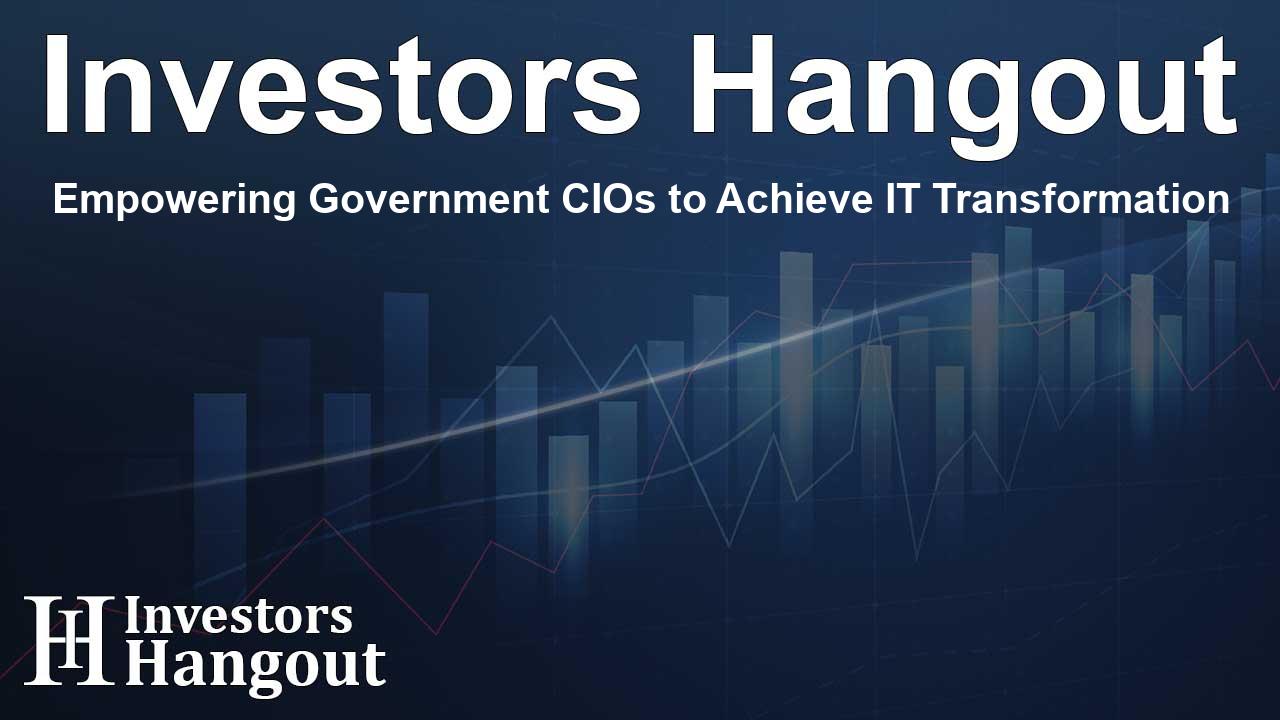Empowering Government CIOs to Achieve IT Transformation

Empowering Government CIOs to Achieve IT Transformation
In our ever-evolving public sector landscape, the role of Chief Information Officers (CIOs) is becoming increasingly crucial. With the rapid transformation of IT departments, it is essential for federal CIOs to possess robust leadership skills to guide their teams through transitions effectively. Info-Tech Research Group has released a comprehensive blueprint designed to help these leaders navigate change while maintaining stability and focus on essential IT initiatives.
A Resource for Navigating Change
This newly developed framework equips CIOs with practical insights and guidance, allowing them to act proactively and align resources accurately. The emphasis on early intervention is particularly significant, suggesting that identifying potential issues can help sustain progress on key projects. This structured approach represents a strategic shift in how government IT departments manage transitions, leading to improved outcomes.
The Four-Step Framework
At the heart of Info-Tech’s resource is a clear four-step framework aimed at preparing IT leaders to embrace the inevitable changes in the landscape:
- Assess Risk: Establishing a comprehensive risk register enables CIOs to foresee and manage operational challenges effectively. By understanding the likelihood and impact of various risks, IT leaders can implement timely interventions to ensure services continue without disruption.
- Align Resources: Maintaining a clear view of internal capacities, including talent, budget, and vendor obligations, empowers CIOs to respond quickly to shifting demands. This proactive alignment ensures that resources are available when they are most needed.
- Plan Modernization: By concentrating on high-impact initiatives that offer achievable goals, CIOs can drive meaningful modernization. This strategy not only keeps momentum but also supports a more substantial digital transformation.
- Execute Confidently: The blueprint highlights that reinforcing stability during periods of change requires clear communication and decisive action. Through effective support and emphasis on key outcomes, CIOs can cultivate resilience within their teams and illustrate the lasting benefits of strong IT leadership.
Building Trust and Agility
Implementing this structured approach is not merely about maintaining continuity; it is also about building trust among stakeholders. As Patrick Spencer, research fellow at Info-Tech Research Group, articulates, government CIOs must engage their teams and stakeholders from the outset. Proactive engagement fosters confidence and ensures that changes are not only anticipated but also managed effectively.
Moreover, this resource highlights the current transitions occurring within many federal IT departments, such as changes in workforce dynamics and the necessary adjustments in funding timelines. Such insights allow CIOs to leverage these opportunities to enhance core capabilities and focus on high-impact initiatives that drive real value.
Strategies for Long-Term Success
The research suggests that by using the insights provided in this blueprint, public sector leaders can reinforce stability during times of change, enabling them to pursue their mission-critical objectives. This is paramount, especially in today’s climate, where technology is central to successful governmental operations.
Furthermore, engaging with experts like Patrick Spencer can provide additional context and depth to these strategies, allowing CIOs to adapt them to their specific circumstances. By attending events and accessing expert insights, IT leaders can continuously refine their approach to leading their departments effectively toward their technological goals.
About Info-Tech Research Group
Info-Tech Research Group stands as one of the leading research and advisory firms globally, serving over 30,000 professionals across IT and HR. For almost three decades, they have created a significant impact by providing unbiased research and effective tools to assist leaders in making informed strategic decisions. This commitment to excellence allows organizations to achieve favorable results, particularly in alignment with technological advancements.
Frequently Asked Questions
1. What is the primary goal of the Info-Tech blueprint for CIOs?
The blueprint aims to help federal CIOs navigate IT transitions effectively while maintaining organizational stability and continuity in essential services.
2. How does the framework suggest CIOs manage risk?
CIOs are encouraged to create an integrated risk register to foresee operational challenges and implement timely, targeted actions.
3. Why is resource alignment important in this context?
Aligning resources ensures that talent, budget, and vendor commitments are coordinated, allowing for agility in response to changing priorities.
4. What is meant by planning modernization?
It involves focusing efforts on high-impact, achievable initiatives to sustain digital transformation and maintain momentum in modernization efforts.
5. How can CIOs reinforce stability during times of change?
By executing plans confidently through clear communication and early engagement with stakeholders, CIOs can build trust and demonstrate the value of collective IT leadership.
About The Author
Contact Evelyn Baker privately here. Or send an email with ATTN: Evelyn Baker as the subject to contact@investorshangout.com.
About Investors Hangout
Investors Hangout is a leading online stock forum for financial discussion and learning, offering a wide range of free tools and resources. It draws in traders of all levels, who exchange market knowledge, investigate trading tactics, and keep an eye on industry developments in real time. Featuring financial articles, stock message boards, quotes, charts, company profiles, and live news updates. Through cooperative learning and a wealth of informational resources, it helps users from novices creating their first portfolios to experts honing their techniques. Join Investors Hangout today: https://investorshangout.com/
The content of this article is based on factual, publicly available information and does not represent legal, financial, or investment advice. Investors Hangout does not offer financial advice, and the author is not a licensed financial advisor. Consult a qualified advisor before making any financial or investment decisions based on this article. This article should not be considered advice to purchase, sell, or hold any securities or other investments. If any of the material provided here is inaccurate, please contact us for corrections.
